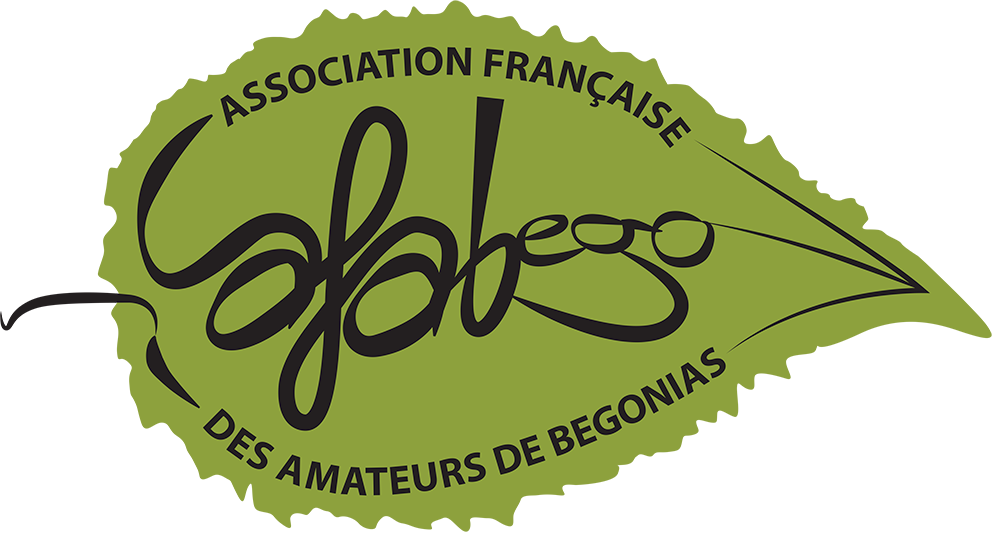In this first page, we are studying the type of the Begonia (terrestrial or epiphytic), its habit (rhizomatous, creeper, upright stem, etc), the consistency of the stems, the longevity (annual or perennial), and the presence or not, of tubers and bulbils.
1. Support
Terrestrial plant
About a plant who grows on the ground on the forest floor.
- on the forest floor
- B. elatostemmoides Hooker f. / section Filicibegonia / Gabon
- B. maynensis A. De Candolle / section Knesebeckia / Equateur – Pérou
- on the ground of a mountain meadow
- B. froebelii A. De Candolle / section Eupetalum / Equateur
- or on rocks (saxicolous plant)
- B. ankaranensis Humbert / section Quadrilobaria / Madagascar / sur calcaire
- B. keraudreniae Bosser / section Erminea / Madagascar / sur gneiss
- B. mananjebensis Humbert / section Quadrilobaria / Madagascar / sur gneiss et lave
Épiphytic plant
Plant which grows often on a tree, but without being a parasite. when the plant starts growing, its may grow from the ground (sowing or from a fallen leaf), then its climbs, hangs to a tree and frees itself from the ground ; its may too grow from the support, without a link with the ground.
-
- B. longipetiolata Gilg / section Tetraphila / Afrique tropicale / épiphyte sur un tronc
- B. quadrialata Warburg subsp. quadrialata / section Loasibegonia / Afrique tropicale / également épiphyte sur un tronc
Some species have terrestrial individuals and epiphytic or saxicolous ones.
-
- B. Madagascar sp. / section Erminea Madagascar ( Makira Forest) / this tuberous species grows on ground, or on trees, or rocks.
2. Longevity
Annual plant
A plant with a short live, often a season (the rain season) : with these begonias, we can see simultaneously plants, plantlets, fruits with seeds and seedlings.
-
- B. humilis Dryander / section Doratometra north-west of South America / annual Begonia
Perennial plant
A plant which may live several years ; most of Begonia are perennial.
3. Stem
Herbaceous stem
As a grass.
-
- B. roxburghii A de Candolle / section Sphenanthera / India – Burma / plant with herbaceous upright stems
- B. hemsleyana JD Hooker / section Platycentrum / China / plant with herbaceous upright stems
Woody (at least at base or suffrutescent)
As wood ; many begonias have woody stems at base
-
- B. henrilaportei D. Scherberich & J. Duruisseau / section Nerviplacentaria / Madagascar / woody stems at base
- B. ferruginea Linneaus / section Casparaya / Colombia / sarmentous species, climb, which grows to 3 or 4 m high, hanging to the trees and thickets
Plant without stem (or acaulescent)
Some tuberous species ; leaves start direct from the tuber
-
- B. ambodiforahensis D. Scherberich & J. Duruisseau/ section Erminea / Madagascar (Masoala) / begonia acaulescent saxicolous
Bulging stem at base (caudex)
Plant with an upright stem bulging at base as a caudex.
-
- B. aconitifolia A. de Candolle / section Knesbeckia / Brazil / begonia with a caudex (in cultivation)
- B. dregei Otto & Dietrich / section Augustia / South Africa / begonia with a caudex (in cultivation)
4. Type
Rhizomatous plant
Plant with an underground or climbing rhizome from which grow roots, stems or leaves.
-
- B. rex Putzeys / section Platycentrum / India (Himalaya Piedmont) / rhizomatous species
- B. vittariifolia N. Hallé / section Scutobegonia / Gabon / rhizomatous, saxicolous
- B. carrieae Schlechtendal & Chamisso / section Gireoudia / from Mexico to Colombia / rhizomatous (in cultivation)
Upright stem
The plant grows stems, sometimes thick, from the ground, erected with leaves.
-
- B. carolineifolia Regel / section Gireoudia / Mexico – Guatemala (in cultivation)
- B. sericoneura Liebmann / section Gireoudia / Central Amaerica and north-west of South America / on a slope in Colombia
Rhizomatous plant, with upright stems from the rhizome
The stems with leaves start from the rhizome
-
- B. buddleiifolia Linden / section Pilderia / from Venezuela to Peru
- B. tengchiana Ch.I-Peng & Y.K. Chen / section Diploclinium / Taïwan
Climb
Sarmentous plant sometimes woody, often climbing, sometimes creeping on ground ; it is not an epiphytic begonia and always grows from the ground.
-
- B. lyallii var. lyallii A. de Candolle / section Nerviplacentaria / Madagascar / may be 4 or 5 m size
- B. lyallii var. lyallii A de Candolle f. masoalensis Aymonin / section Nerviplacentaria / Madagascar (Masoala) / creeper
- B. Equateur sp. / section Gobenia / climbing species on mossy trunks at an altitude ok 3000 m
- B. glabra Aublet / section Wageneria / Central America and South America / creeper on trunks and rocks.
Tuberous plant
Plant with a tuber or a tuberous root, perennial as a reserve ; many bégonias are tuberous ; they may grow as terrestrial, saxicolous or epiphytic.
-
- B. aequatorialis L.B. Smith & B.G. Schubert / section Eupetalum / Ecuador / andean tuberous at high altitude
- B. erminea L’Héritier / section Erminea / Madagascar / tuberous saxicolous
- B. betsimisaraka Humbert / section Erminea / Madagascar / tuberous on ground or epiphytic on trees
- B. sambiranensis Humbert / section Quadrilobaria / Madagascar / tuberous saxicolous
Bulbils
Small vegetal organs as bulbs, which appear on stems, often to the petioles insertion, when the plant is going to dormancy ; they fall and do new plants in spring (in cultivation) or when the rain season arrives.
-
- B. grandis Dryander / section Diploclinium/ China Japan
- B. sutherlandii JD Hooker / section Augustia / East and South Africa
We may see bulbils sometimes on annual begonias
-
- B. wakefieldii Gilg / section Augustia / Esat Africa / annual begonia which does bulbils (and sometimes a tuber) before going to dormancy.
